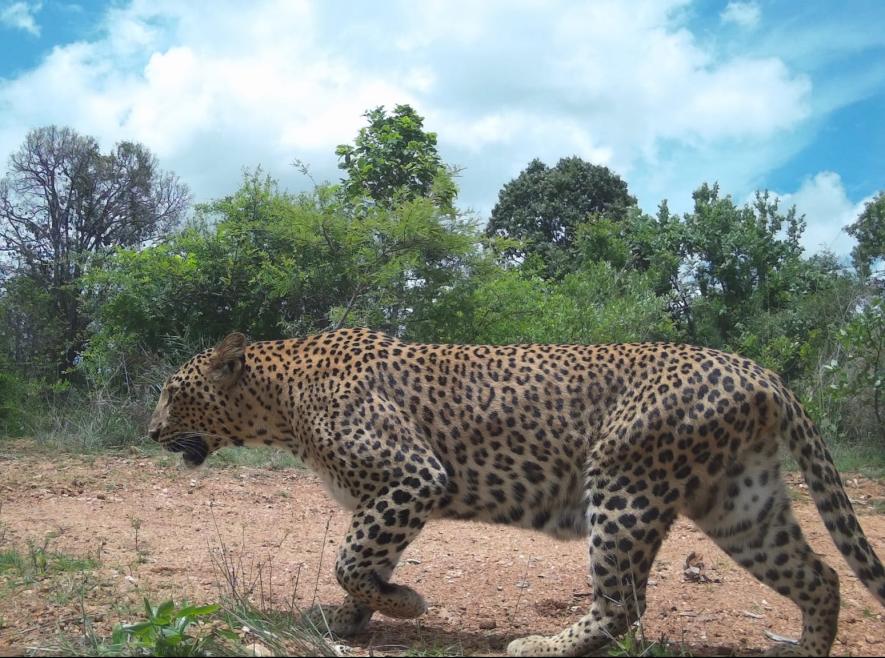Bengaluru is Now Largest Metro With Highest 80-85 Leopards

Image credit: Sanjay Gubbi
Despite the acknowledged fact of frequent habitat loss across the country, there is heartening news coming from forests and scrublands fringing Bengaluru I Karnataka, which harbouring an estimated 80–85 wild leopards, including 54 individuals inside the Bannerghatta National Park (BNP).
With this finding, Bengaluru now surpasses Mumbai’s documented population of 54 leopards and becomes the large metropolis with the highest known number of free-ranging big cats. The remaining 30 leopards roam in the reserved, deemed and private forests scattered across the metropolitan periphery.
A year-long camera-trap survey by Holématthi Nature Foundation (HNF), led by conservation biologist Dr Sanjay Gubbi, has revealed this finding.
“It is also the only metro whose fringes still support an ensemble of tigers, leopards, dholes, elephants, gaur, sambar and other large mammals,” the finding states.
The team deployed more than 250 camera traps across 282 km of mixed habitat—Turahalli, Turahalli Gudda, B.M. Kaval, U.M. Kaval, Roerich Estate, Gollahalli Gudda, Sulikere, Hesaraghatta, Marasandra, Manduru and adjoining government and private lands—as well as throughout Bannerghatta National Park (BNP).
Besides leopards, 34 mammal species were photo-captured, four of them ‘endangered’ and four ‘near threatened’ on the IUCN (International Union for Conservation of Nature) Red List.
Around 22 species fall under Schedule I and five under Schedule II of India’s Wildlife (Protection) Act 1972—underscoring the national and global importance of safeguarding Bengaluru’s remaining natural habitat.
The number of leopards inside BNP has risen gradually —from 40 in 2019, 47 in 2020 to 54 in 2025. The organisation attributes the increase primarily to stricter protection that has protected prey species in the given space and hence improved the prey availability for leopards.
The finding also acknowledged the fact that the past translocation of leopards which came in conflict with the humans from other districts may also have contributed to the increased number in Bengaluru’s outskirts.
The survey for Status of Leopards in India 2022, which covered 20 states and about 70% of the expected leopard habitat, had also found a significant increase in the overall leopard population. From an estimated 8,000 leopards in 2014, the number rose to 12,852 by 2018. The states that boasted largest populations of leopards were Madhya Pradesh (3,421), followed by Karnataka (1,783), and Maharashtra (1,690).
The increase in leopard numbers also rasies concern with regard to the rapid shrinking of leopard habitats over the past century. This robust species, which adapts well for its survival, has been forced to venture into closer proximity with human settlements, leading to more frequent sightings and potential conflicts.
Factors, such as urban expansion, deforestation, and agricultural activities, which are encroaching on the natural habitats of leopards, have pushed them into human-dominated landscapes.
The major credit which the report cites for the increase in leopard population in Bengaluru’s fringes also goes to the people co-existing with leopards and other large wildlife.
The Report’s Suggestions
The report points out at key requirements for the wildlife conservation in the forests on the outskirts of Bengaluru:
• Notify B.M. Kaval, U.M. Kaval, Roerich Estate and Gollahalli Gudda as a Conservation Reserve—a long-term “lung space” for Bengaluru that also secures groundwater recharge and wildlife habitat.
• Add Durgadakal RF, Bettahalliwade RF (Block B) and the deemed forests of J.I. Bachahalli and M. Maniyambal to Bannerghatta NP, where camera traps even photographed tigers.
• Safeguard the Muneshwarabetta–Bannerghatta wildlife corridor through appropriate conservation measures.
• Intensify community outreach so Bengaluru’s rapidly expanding suburbs can coexist safely with leopards.
• Halt further translocation of leopards into BNP; instead, address root causes of human–leopard conflict at the source sites.
The writer is a freelance journalist.
Get the latest reports & analysis with people's perspective on Protests, movements & deep analytical videos, discussions of the current affairs in your Telegram app. Subscribe to NewsClick's Telegram channel & get Real-Time updates on stories, as they get published on our website.
























